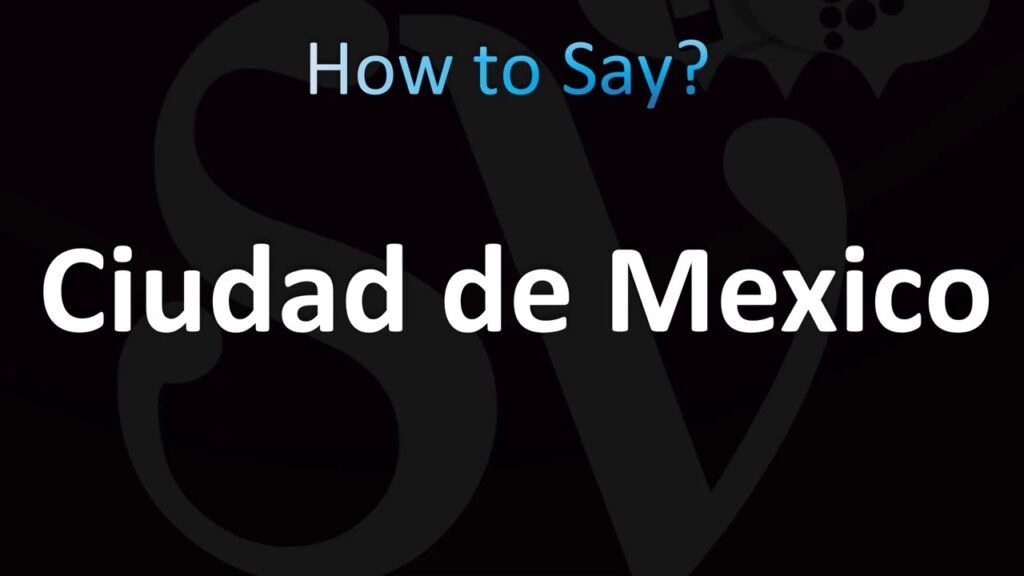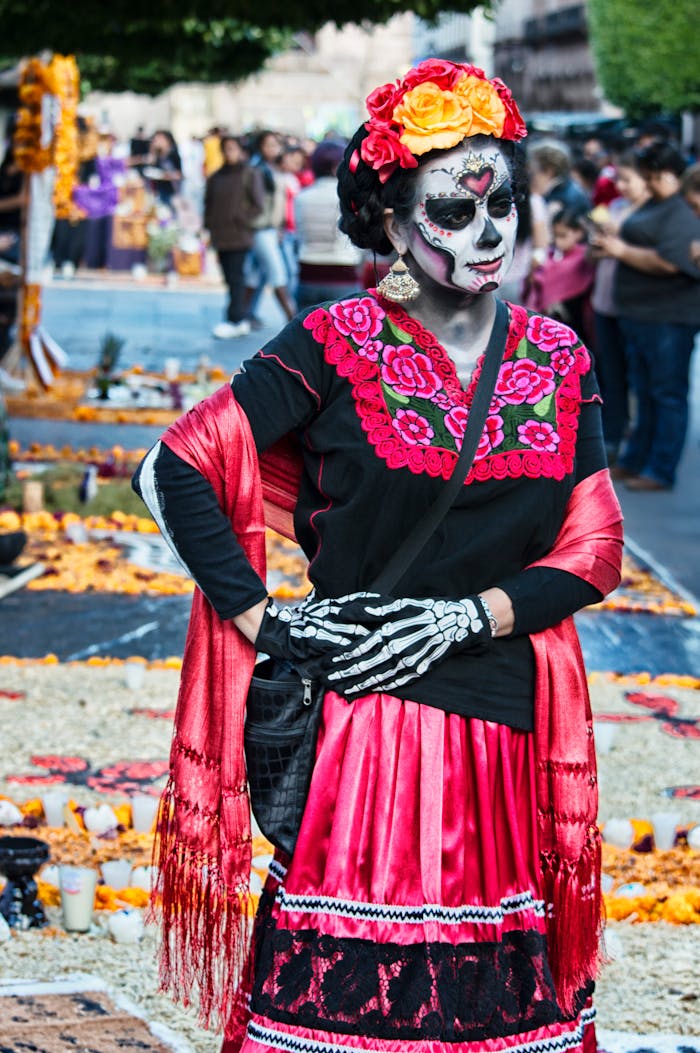Mastering Mexico City Pronunciation in Spanish
Mastering the correct pronunciation of Mexico City in Spanish can significantly enhance your travel experience and interactions with locals during your adventure. In Spanish, Mexico City is referred to as “Ciudad de México” or the abbreviated “CDMX.” Although it might seem straightforward to English speakers, the Spanish pronunciation holds subtle nuances. The name “México” is pronounced more accurately in Spanish with a soft “j” sound – almost like “Meh-hee-ko,” as opposed to the hard “x” sound often used in English. This distinction is a key aspect of sounding more native and less like a tourist while exploring this vast, vibrant city.
Delving deeper into pronunciation, let’s focus on the complete phrase, “Ciudad de México.” Here, “Ciudad” is pronounced as “See-oo-dahd,” with a rolling “d” to smoothly connect to “de,” which is simply pronounced as “deh.” Then, “México” follows the specific phonetic subtleties mentioned earlier. Paying attention to these details can lead to a more authentic and respectful engagement with the rich cultural heritage and contemporary dynamism of Mexico’s capital. It’s not just about the pronunciation; it’s about showing interest and respect towards the culture and language, which locals deeply appreciate.
Furthermore, embracing the local terms and pronunciations opens doors to deeper connections with the city’s heart and soul. Beyond “Ciudad de México” and “CDMX,” immerse yourself in the local language by understanding common colloquial terms and expressions used by the residents. This approach not only improves communication but also enriches your travel adventure with genuine cultural insights and experiences. Whether you’re navigating through the historic Centro, exploring the vast Chapultepec park, or enjoying the vibrant art scene, every interaction becomes more meaningful.
Remember, language is a bridge to understanding a culture. By mastering the correct pronunciation and embracing local expressions, you’re not just visiting Mexico City; you’re experiencing it on a whole new level. This journey of linguistic and cultural immersion can transform a simple adventure into a profound, enriching encounter with one of the world’s most captivating cities.
Common Misconceptions About Pronouncing Mexico City
When discussing the vibrant capital of Mexico, many travelers from around the world often stumble over the pronunciation of Mexico City. A common misconception is that the name should be pronounced exactly as it’s spelled in English, with a sharp “x” sound as in “mix.” However, in the Spanish language, which is the official language of Mexico, the name is pronounced more softly, almost like “Meh-hee-ko City.” This softer “h” sound in place of the “x” reflects the way the word was originally pronounced by the Aztecs, and it’s a common point of confusion for English-speaking visitors.
Another frequent error involves the inflection and emphasis on syllables. In English, there’s a natural tendency to emphasize the first syllable, turning it into something like “MEX-ico City.” On the contrary, the correct Spanish pronunciation places the stress on the second syllable, resulting in “Me-HI-co City,” which flows more naturally in conversational Spanish. It’s a subtle nuance, but it makes a significant difference in sounding more authentic and respectful when saying the city’s name.
Moreover, some visitors believe that the correct way to refer to the capital is by using its former name, “Distrito Federal” or “DF,” similar to how Washington D.C. is referred to in the United States. However, in January 2016, the name was officially changed to “Ciudad de México” or “CDMX,” and using the old name can reveal a visitor’s outdated knowledge of the city. Understanding these nuances in pronunciation and terminology not only helps in blending in with the locals but also in appreciating the rich history and culture of Mexico City.
Useful Phrases When Exploring Mexico City
Exploring Mexico City, a bustling metropolis rich in culture and history, is an adventure of its own. While English is widely spoken in tourist areas, knowing a few basic Spanish phrases can greatly enhance your experience and help you connect with locals. Here are some essential phrases to get you by.
Firstly, greetings are fundamental. A simple “Buenos días” (Good morning), “Buenas tardes” (Good afternoon), or “Buenas noches” (Good evening/night) can set a positive tone for your interactions. To ask for directions, you might need “¿Dónde está…?” (Where is…?) followed by the place you’re looking for. Locals appreciate when visitors make an effort to speak the language, even if it’s just a few words.
When dining out or shopping, phrases like “¿Cuánto cuesta esto?” (How much is this?) and “La cuenta, por favor” (The bill, please) are invaluable. In the markets or street stalls, showing interest in the price can also invite friendly bargaining, a common practice. Furthermore, for dietary restrictions or preferences, stating “Soy vegetariano/a” (I am vegetarian) or “Sin carne” (Without meat) could be quite helpful.
In case of emergencies or needing assistance, knowing how to say “Necesito ayuda” (I need help) or “¿Puede ayudarme?” (Can you help me?) can be crucial. Similarly, “¿Hay alguien que hable inglés?” (Is there anyone who speaks English?) might come in handy if you find yourself needing more complex assistance or explanations. Remember, a little effort in communicating can go a long way in making your exploration of Mexico City more enjoyable and immersive.
Practice Makes Perfect: Mexico City Pronunciation
Navigating the bustling streets of Mexico City becomes far more enriching when you can pronounce the names of its iconic landmarks and districts correctly. As a melting pot of ancient civilizations and modern urban culture, the city’s nomenclature is deeply rooted in Nahuatl, Spanish, and other indigenous languages. Mastering the pronunciation of these names not only shows respect for the rich cultural tapestry of Mexico but also opens up avenues of interaction with locals, who appreciate the effort to speak their language correctly.
One common challenge for visitors is the pronunciation of “Xochimilco,” the famed floating gardens of Mexico City. In English, it’s often mispronounced, but with a little practice, you can get it right. It sounds like “Soh-chee-MEEL-koh,” with the emphasis on the third syllable. This magical network of canals and artificial islands, or “chinampas,” is a UNESCO World Heritage Site and a must-visit for anyone seeking an authentic glimpse into pre-Hispanic agricultural methods still in use today.
Another frequently visited site with a tricky name is the “Zócalo,” Mexico City’s main square, officially known as “Plaza de la Constitución.” The pronunciation is more straightforward than it appears; it is simply “SOH-kah-loh,” with a vibrant “z” sound at the beginning. This square is not just the heart of Mexico City; it is the epicenter of public life, a place where history, culture, and politics intersect. From the ruins of ancient Tenochtitlán to monumental celebrations, the Zócalo is where Mexico’s past and present come alive.


